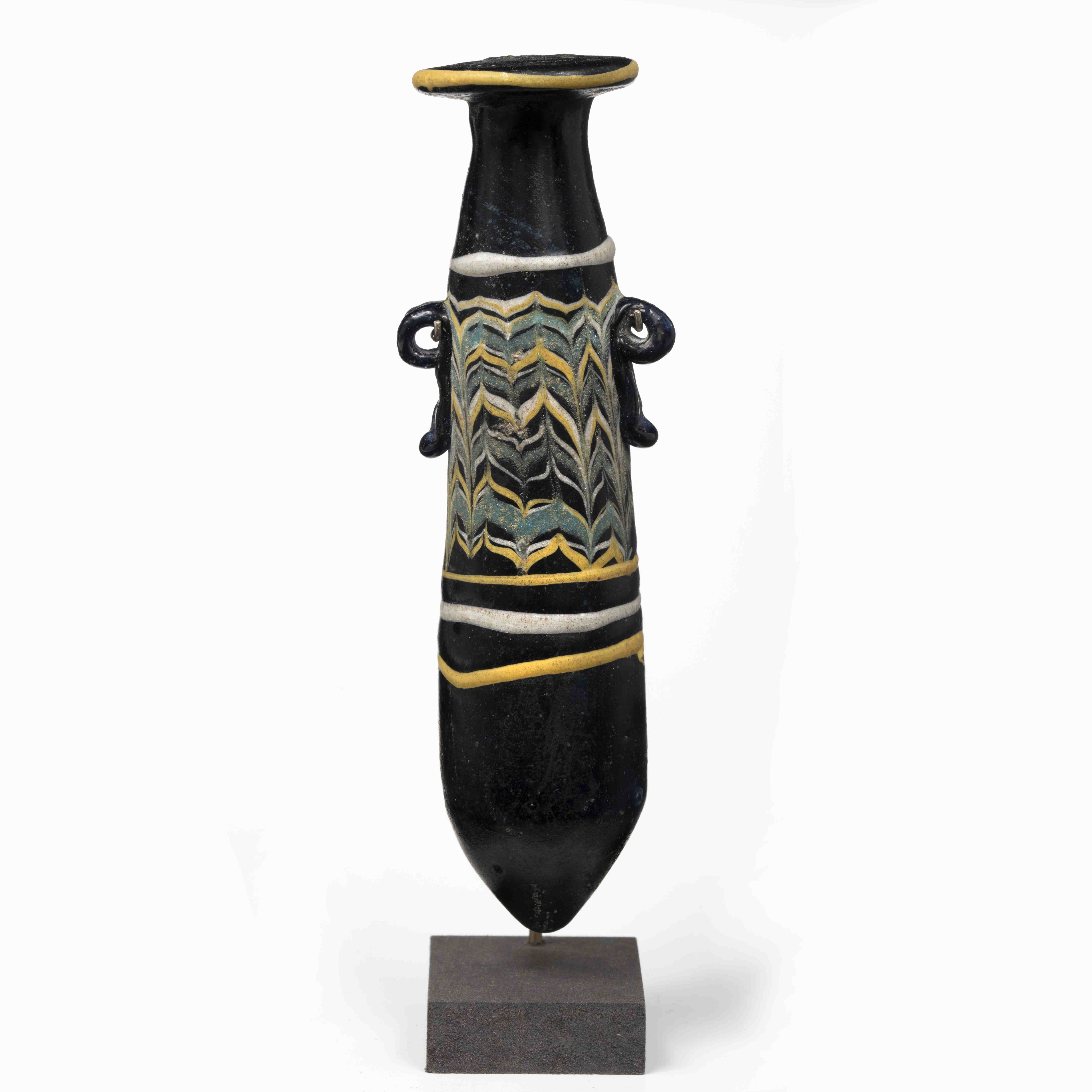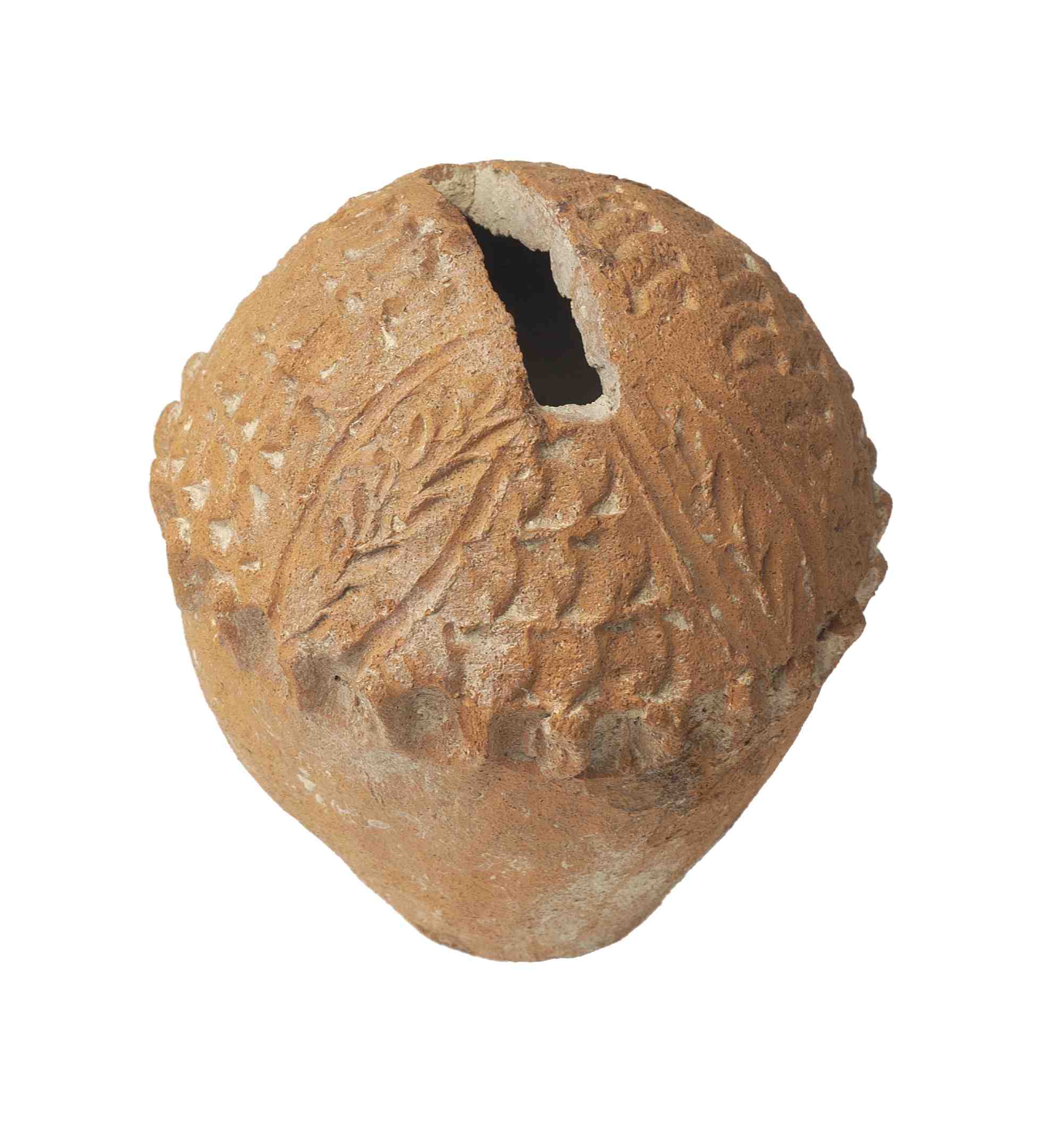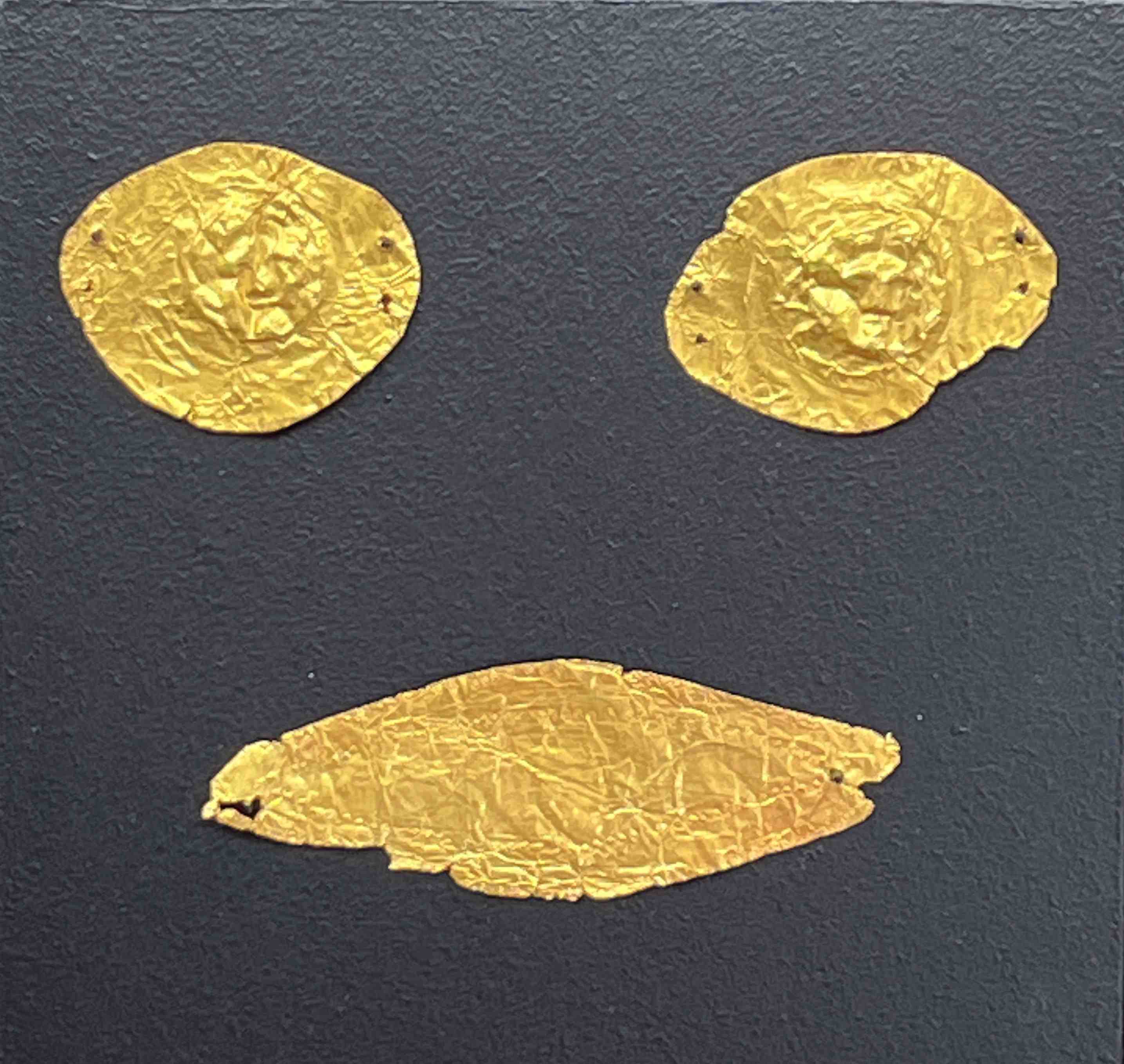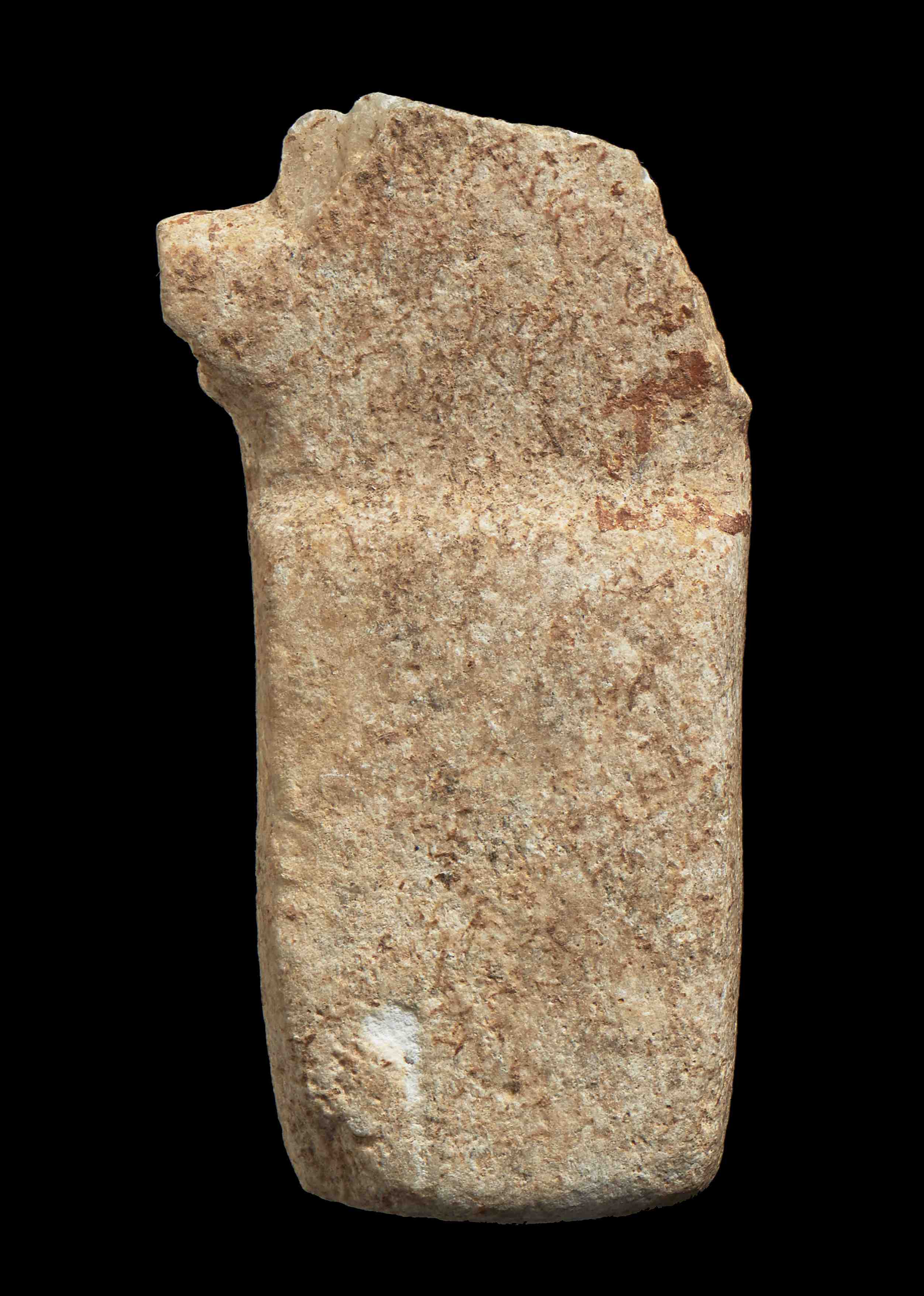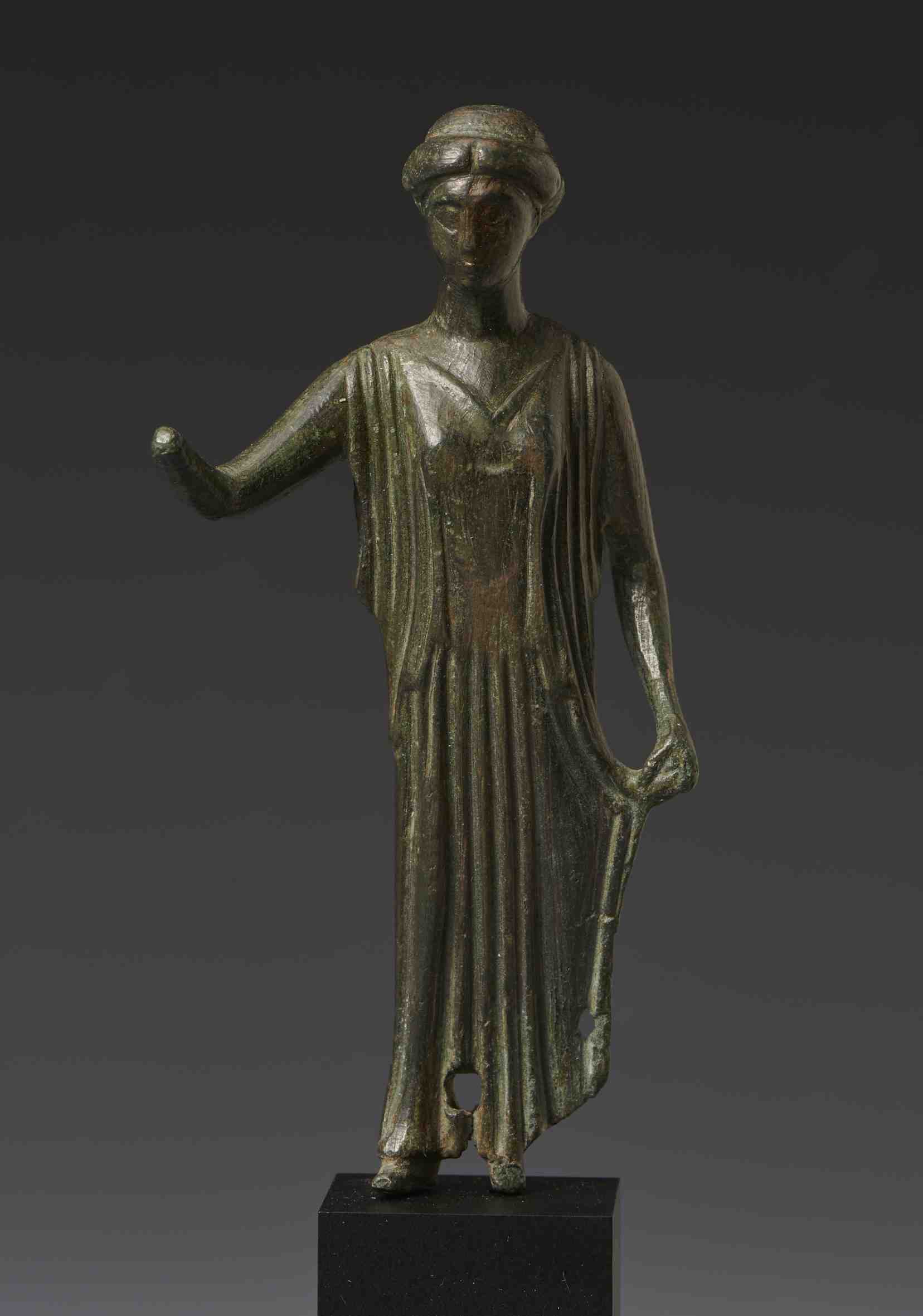Painted terracotta cinerary urn (larnax)
Hollow, in the the shape of a tall hut, with rounded roof with central opening, acroteria with female faces on the sides, set on four high feet, the body divided into two registers, the painted decoration now üartially worn, an over-sized key pattern on the lower section, the upper section possibly showing on one side Herakles holding his club, confronting the three-headed dog Cerberus, a scene with garlands hanging from the ceiling on the other
Note
The larnax was the standard type of small closed chest-shaped coffin used in Crete and in Ancient Greece as an urn for human remains or ashes.
The first larnakes appeared in the Minoan period of the Aegean civilization. Their original structure with recessed panels on each side suggests a wooden prototype.
They were richly decorated with abstract patterns, octopuses and scenes of hunting and cult rituals.
During the later Hellenistic period, larnakes were painted in similar styles to contemporary Greek vases.
Private collection, London, acquired in April 1969
Art market, London, 2013
Private collection, Switzerland, acquired from the above

